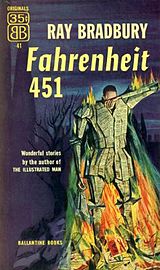How can you get everything done in a one-person business? When you look at corporations with separate departments for research and development, marketing, human resources, accounting, and more, it’s hard to imagine that a freelancer could possibly fill all those functions alone. If you focus on ROI (return on investment) and implement a few time management strategies, though, it can be done.
Consider ROI
 The reality of a one-person business is that it can be messy— interruptions happen. If you have a time management plan and a few strategies in place, crises and interruptions won’t derail your productivity.
The reality of a one-person business is that it can be messy— interruptions happen. If you have a time management plan and a few strategies in place, crises and interruptions won’t derail your productivity.
Take time to think through which of your activities gives you the highest ROI. From which business activity do you earn the most? Is it
- writing a new book?
- teaching a workshop?
- ghostwriting a full-length book for someone else?
- working on your blog so that you can connect with your audience?
- editing a manuscript?
When you know which activities are most profitable, you can plan your time so that your most productive working hours are spent on those tasks, and other tasks are relegated to less productive times of day.
The 80/20 principle
For most people, 20% of what you do in your business produces about 80% of your income (Pareto principle). It’s hard to stay focused on the profitable 20%, because the other 80% — bill paying, shipping, customer service, filing, and other administrative tasks — clamors for attention, and must be done. Don’t waste your creative hours on these tasks; they are perfect for the afternoon slump when your focus is least sharp.
Divide and conquer
Once you know what your highest ROI category is, and you’ve listed the tasks that contribute to the most profitable 20% of your business, create a weekly time outline that puts the most important activities first.
My personal system for getting things done could be described as a divide and conquer method of management. Here’s how:
- Divide tasks by category
- Prioritize based on profitability
- Do the most important things first
- Outsource things that are not directly income producing.
You can find a brief, informal overview of the system at my Do What Matters, Make it Pay blog. The post is a response to a fellow writer’s question, so doesn’t cover everything, but is a start. You can find it at How to Get it all Done in a One-Person Business.
Do you have any tips for time management that you’d like to add? Feel free to leave them in the comment section below.
Originally posted Feb 23, 2012; updated 2017.





